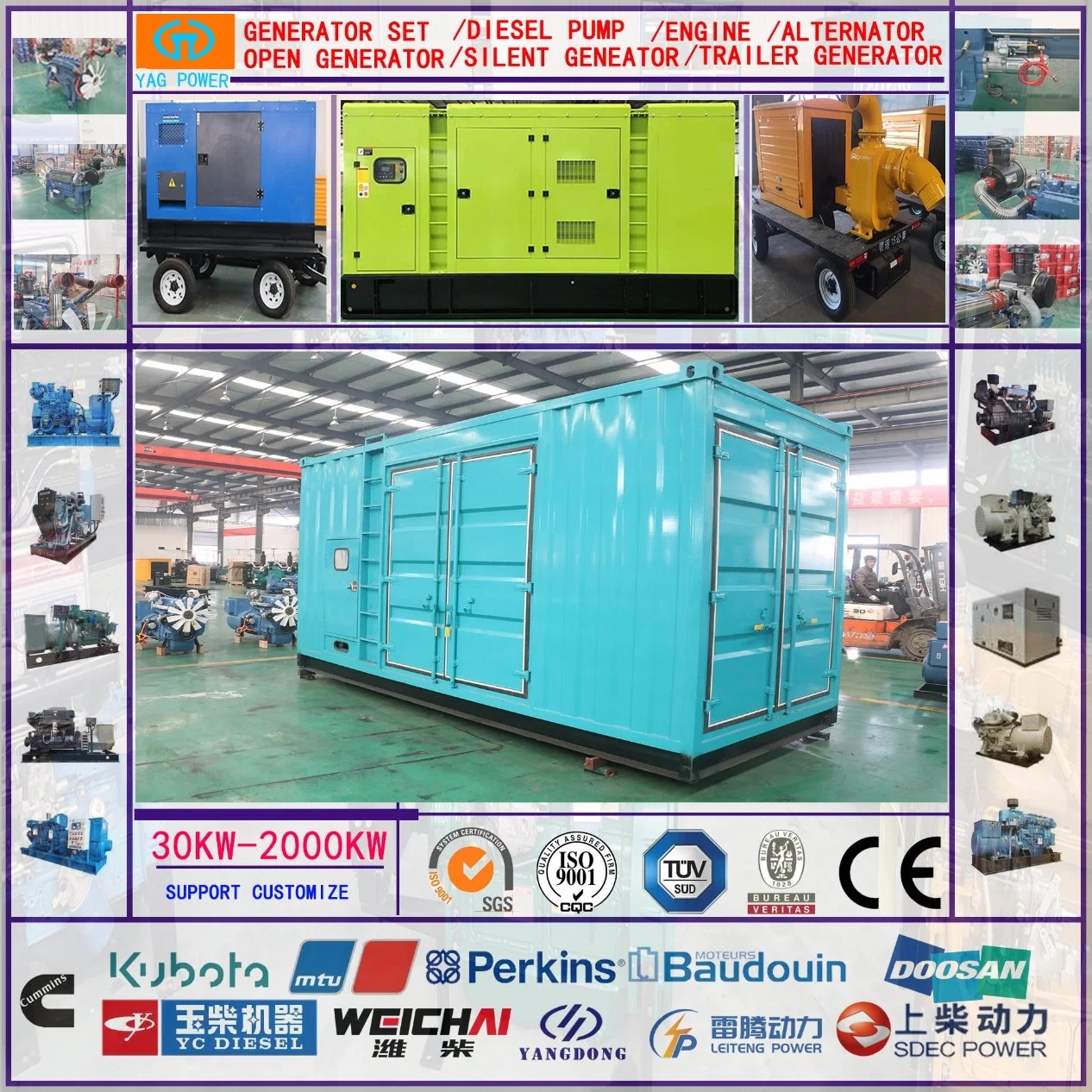Introduction

In saltwater environments, the presence of corrosive elements poses a significant challenge for various types of equipment, including diesel generators. These environments can be found in coastal areas, offshore platforms, marine vessels, and other locations where saltwater exposure is inevitable. Diesel generators are essential for providing reliable power in such environments, where the consequences of power outages can be severe. In this article, we will explore the unique considerations and challenges of using diesel generators in saltwater environments and discuss strategies to ensure their reliable operation.
Understanding the Challenges
Saltwater is highly corrosive due to the presence of chloride ions, which can accelerate the corrosion of metal components in diesel generators. The combination of moisture, salt, and fluctuating environmental conditions can lead to rapid deterioration of critical components, such as the engine, alternator, and electrical connections. Corrosion not only reduces the lifespan of the generator but also increases the risk of unexpected failures and downtime.
Another challenge in saltwater environments is the presence of humidity, which can promote the growth of mold, mildew, and other contaminants that can affect the performance of the generator. In addition, saltwater spray and mist can penetrate the generator enclosure, leading to internal corrosion and damage to sensitive electronic components. These factors highlight the need for robust design and materials that can withstand the harsh conditions encountered in saltwater environments.
Design Considerations
When selecting a diesel generator for use in saltwater environments, several key design considerations should be taken into account to ensure reliable operation and longevity. One of the most critical factors is the choice of materials that are resistant to corrosion. Components such as the engine block, cooling system, exhaust system, and electrical connections should be made of high-quality, corrosion-resistant materials, such as stainless steel, aluminum, or coated metals.
Additionally, the generator enclosure should be designed to provide protection against saltwater ingress and corrosion. Sealed enclosures with proper ventilation and drainage systems can help prevent the buildup of moisture and contaminants inside the generator, reducing the risk of corrosion and damage. The use of waterproof seals, gaskets, and coatings can further enhance the generator's resistance to saltwater exposure.
Furthermore, the electrical components of the generator, including the wiring, control panel, and electronic modules, should be designed to withstand the effects of humidity and saltwater exposure. Specialized coatings and encapsulation techniques can protect these components from corrosion and ensure reliable performance in challenging environmental conditions.
Maintenance and Inspection
Regular maintenance and inspection are essential to ensure the reliable operation of diesel generators in saltwater environments. Routine checks should be performed to identify any signs of corrosion, wear, or damage to critical components. This includes inspecting the engine, alternator, electrical connections, and enclosure for signs of corrosion, leaks, or other issues that could impact the generator's performance.
In addition, regular cleaning of the generator enclosure and components is necessary to remove salt residue, dirt, and other contaminants that can accelerate corrosion and reduce the generator's lifespan. Special attention should be paid to the cooling system, air intake, and exhaust system, as these components are particularly vulnerable to saltwater exposure and corrosion.
Furthermore, it is important to follow the manufacturer's maintenance guidelines and schedule regular service intervals to ensure that the generator is operating at peak performance. diesel generator set includes changing the oil and filters, inspecting the fuel system, testing the battery, and performing other maintenance tasks as recommended by the manufacturer.
Protection and Mitigation Strategies
In addition to selecting a diesel generator with robust design features and materials, there are several protection and mitigation strategies that can help enhance the reliability and longevity of the generator in saltwater environments. One effective strategy is the use of protective coatings and treatments on critical components to provide an additional layer of defense against corrosion.
For example, sacrificial anodes can be installed on the generator's metal components to attract corrosive elements and prevent them from damaging the generator. These anodes are made of highly reactive metals, such as zinc or magnesium, that corrode more easily than the generator's components, thereby protecting them from corrosion.
Another effective strategy is the use of desalination systems to remove salt from the air and water before it comes into contact with the generator. These systems can help reduce the amount of salt residue and moisture in the environment, minimizing the risk of corrosion and damage to the generator.
Furthermore, proper storage and positioning of the generator can also help mitigate the effects of saltwater exposure. Elevating the generator above ground level, using protective covers or enclosures, and positioning it away from direct exposure to saltwater spray can help reduce the risk of corrosion and damage.
Conclusion
Diesel generators play a critical role in providing reliable power in saltwater environments, where the challenges of corrosion, humidity, and saltwater exposure can impact their performance and longevity. By selecting generators with robust design features, materials, and protective coatings, and implementing effective maintenance and protection strategies, operators can ensure the reliable operation of diesel generators in these challenging conditions.
Regular maintenance, inspection, and cleaning are essential to identify and address issues that could compromise the generator's performance. By following the manufacturer's guidelines and implementing protection and mitigation strategies, operators can minimize the impact of saltwater exposure and corrosion, ensuring that their diesel generators continue to provide reliable power in saltwater environments for years to come.
